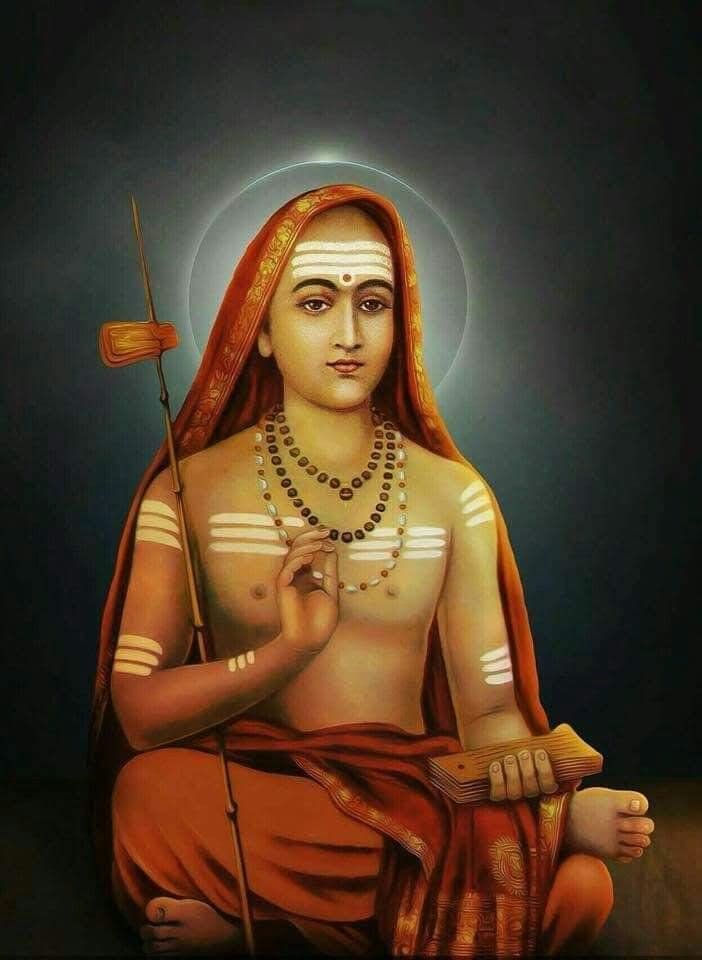The very fact that Hinduism is still a dynamic and all-encompassing religion stands as ample testimony to the deeds of Adi Shankaracharya. Apart from being the champion of Advaita philosophy, one of his invaluable contributions towards Hinduism was the reordering and restructuring of the ancient Sannyasa order. These Sannyasis help eternal code of life contained in the Vedas, still flows as the dynamic force underlying and unifying all humanity reach the masses.

Adi Shankara (“first Shankara,” to distinguish him from other Shankaras)(8th cent. CE),also called Adi Shankaracharya (Sanskrit: आदि शङ्कर, आदि शङ्कराचार्य, romanized: Ādi Śaṅkarācāryaḥ, lit. ‘First Shankaracharya’, was an Indian Vedic scholar and teacher (acharya), whose works present a harmonizing reading of the sastras, with liberating knowledge of the self at its core, synthesizing the Advaita Vedanta teachings of his time. The title of Shankracharya, used by heads of the amnaya monasteries is derived from his name.
Adi Shankara is most known for his systematic reviews and commentaries (Bhasyas) on ancient Indian texts. Shankara’s masterpiece of commentary is the Brahmasutrabhasya (literally, commentary on Brahma Sutra), a fundamental text of the Vedanta school of Hinduism.
Bhagavan Adi Shankaracharya is considered to be the ideal Samnyasi. It is commonly accepted that he lived about one thousand two hundred years ago though there are historical sources that indicate that he lived in an earlier period. He was born in Kalady, Kerala and in his short life span of 32 years, his accomplishments seem a marvel even today, with our modern conveyances and other facilities. At the tender age of eight, burning with the desire for Liberation, he left home in search of his Guru.
From the southern state of Kerala, the young Shankara walked about 2000 kilometres — to the banks of the river Narmada, in the central plains of India, to his Guru— Govindapada. He stayed there serving his Guru for four years. Under his teacher’s compassionate guidance, the young Shankaracharya mastered all the Vedic scriptures.
At the age of twelve, his Guru deemed that Shankara was ready to write commentaries on major scriptural texts. At his Guru’s command, Shankara wrote commentaries elucidating the subtle meanings hidden in the teachings of the scriptures. At the age of sixteen, he dropped his pen having completed writing all the major treatises.
From the age of sixteen to thirty-two, Shankaracharya went forth, travelling across the length and breadth of ancient India bringing to the hearts of the masses the life-giving message of the Vedas. “Brahman, Pure Consciousness, is the Absolute Reality. The world is unreal. This is the correct understanding of the Sastra is the thundering declaration of Vedanta”
ब्रह्म सत्यं जगन्मिथ्या जीवो ब्रह्मैव नापरः।
अनेन वेद्यं सच्छास्त्रमिति वेदान्तडिण्डिमः॥ (ब्रह्मज्ञानावलीमाला)
In essence, the individual is not different from Brahman. Thus by the statement “Brahma Satyam Jagan Mithya, Jeevo Brahmaiva Na Para” he condensed the essence of the voluminous scriptures.
In those days ancient India was sunk in a quagmire of superstitions and scriptural misinterpretations. Degraded ritualism flourished. The essence of Sanatana Dharma, with its all-embracing message of Love, Compassion and the Universality of Humankind was completely lost in the blind performance of these rituals.
Shankaracharya challenged various eminent scholars and leaders of various religious sects in vigorous disputes. They championed their own interpretations of the scriptures but the prodigious boy sage was easily able to overcome all of them and make them understand the wisdom of his teachings. These men of stature then accepted Shankaracharya as their guru.
They started to practice in accordance with his guidance, and this change in their lives also wrought a change in the lives of their innumerable followers, who came from all strata of society.
He established 4 ashrams in four corners of India and entrusted his four disciples to teach and propagate Advaita through them.
In Shankara’s time, there were innumerable sects following their own narrow philosophies and systems of worship. People were totally blind to the underlying common basis of the One God. For their benefit, Shankaracharya formulated the six sect system of worship which brought to the fore the main godheads – Vishnu, Siva, Shakti, Muruka, Ganesha and Surya. He also formulated the rituals and rites to be followed in most of the major temples in India.
Apart from his immense intellectual and organisational abilities, Shankaracharya was an exquisite poet, with a heart brimming with Love of the Divine.
He composed 72 devotional and meditative hymns like Soundarya Lahari, Sivananda Lahari, Nirvana Shalkam, Maneesha Panchakam. He also wrote 18 commentaries on the major scriptural texts including the Brahma Sutras, the Bhagavad Gita and 12 major Upanishads. He also authored 23 books on the fundamentals of the Advaita Vedanta philosophy which expound the principles of the non-dual Brahman. These include Viveka Chudamani, Atma Bodha, Vaakya Vritti, Upadesa Sahasri, among others.
Considered to be an incarnation of Lord Siva, Sri Shankara lived only a short life span of 32 years. There are many inspiring legends about him.
